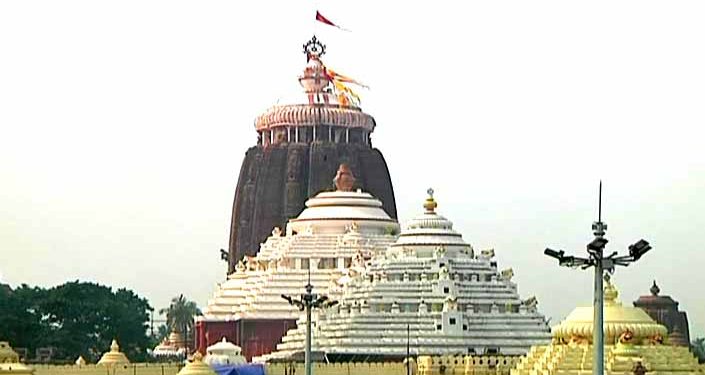Cuttack: The ongoing Puri Heritage Corridor construction work might have damaged the 800-year-old Jagannath Temple, the Archaeological Survey of India (ASI) informed the Orissa High Court here Monday. The ASI also said that the Odisha government project was being carried out without valid permission from the competent authorities.
Hearing a PIL claiming that construction work for the project has affected the health of the temple, the court had asked the ASI, the custodian of the 12th-century shrine, to undertake a joint inspection of the site with the Odisha government and file a report to the court.
Asking the Odisha government to file its reply on the ASI’s affidavit, a division bench headed by Chief Justice S Muralidhar posted the matter to be heard again May 22.
“There is every possibility that construction agency OBCC (Odisha Bridge Construction Company) during the excavation and removal of the earth might have destroyed the archaeological remains of the heritage site,” the ASI affidavit said.
“The ongoing construction work of the project being carried out by the Odisha government inside the ‘prohibited’ area of the ancient monument has no valid permission or no objection certificate (NOC) from the competent authorities,” the ASI also stated.
The state had informed the court that correspondences were exchanged between the Odisha government and the National Monuments Authority (NMA), which functions under the Union Ministry of Culture and is responsible for grant of permission for construction-related activity in the ‘prohibited and regulated’ areas.
However, in its 70-page affidavit to the Odisha High Court, the ASI said that the drawings and structural designs included in the revised detailed project report (DPR) are different from the ones presented to the NMA.
As directed by the high court, the ASI along with officials of OBCC, Shree Jagannath Temple Administration and the Puri district collector made a joint inspection of the site last week.
The affidavit claimed that during the joint inspection, the OBCC managing director said that till date no permission or approval from the NMA or any competent authorities was available for structural activities and the design of the project.
“The MD has further informed (the ASI) that there are deviations in plan and elevation as well as in the project design. In the revised proposal, the height of various structural units had been increased and more units have been added,” the ASI said.
“No heritage impact assessment studies have been conducted before commencement of the project. At several locations stratified deposits of about 15 to 20 ft have taken place, which has caused irreparable damage to the heritage site,” the ASI said in its affidavit.
The petitioner has prayed that the court give an order to stop the construction activities undertaken by the state government for a developmental project near the temple allegedly violating the Ancient Monuments and Archaeological Sites and Remains Act, 1958. The Odisha government has not taken permission from the ASI for the construction work, the petitioner submitted.
“Cracks have appeared in the Nata Mandap of the 12th-century shrine due to these construction activities and continued construction work will pose a threat to the structure of the temple,” the petitioner said in the plea.
Chief Minister Naveen Patnaik along with Puri’s titular king Gajapati Dibya Singha Deb had last year laid the foundation stone for the project. It seeks to provide better amenities to pilgrims, including toilets and cloakrooms.






































